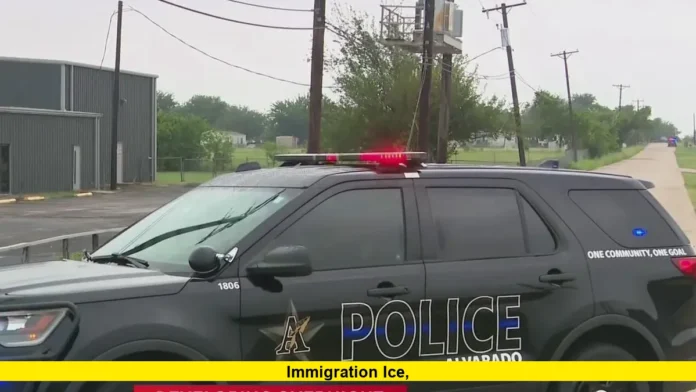immigration ice is again under nationwide spotlight after a violent ambush outside a Texas detention center, where suspects connected to transgender and anti-fascist activism now face serious federal charges.
The attack took place outside the Prairieland ICE facility in Alvarado, Texas, on July 4. According to investigators, a group of ten to twelve individuals dressed in tactical black gear used fireworks and vandalism to lure officers outside. Graffiti with phrases like “ICE Pig” and “Traitor” was sprayed on the facility’s walls. Once officers stepped out, gunfire erupted. A police officer was shot in the neck, and multiple immigration officers came under fire from at least two shooters.
Authorities have labeled the incident a planned ambush rather than a protest. Ten individuals are now charged with attempted murder of federal officers and firearms offenses. If convicted, the suspects could face sentences ranging from a decade in prison to life.
The Role of Activism in the Attack
Court filings show that several suspects were linked to transgender advocacy circles and anti-fascist networks in the Dallas area. Among those named is Cameron Arnold, also known as Autumn Hill, a transgender activist accused of helping coordinate logistics. Another key figure, Benjamin Song, a former Marine reservist, allegedly trained others in firearms use and tactics.
The group is said to have carried propaganda materials, including flyers reading “Fight ICE Terror With Class War” and flags that called for resistance against fascism. Investigators also uncovered body armor, AR-style rifles, and electronic blocking devices designed to prevent law enforcement tracking.
Defense attorneys argue that the suspects initially intended a solidarity demonstration for immigrant detainees but claim the event escalated when one member opened fire, shifting the action from symbolic protest to armed confrontation. Prosecutors, however, maintain that the presence of weapons, tactical gear, and detailed planning point to premeditation.
Evidence Uncovered
Investigators recovered:
- Firearms: Multiple AR-style rifles, handguns, and ammunition.
- Protective gear: Twelve sets of body armor.
- Technology: Faraday bags to block cell phone tracking.
- Propaganda: Flyers and flags with anti-ICE and anti-fascist slogans.
Officials say the scale of preparation suggests the group intended more than symbolic disruption. This has fueled debate over how protest movements can cross into violent extremism when political tensions run high.
Legal Proceedings Ahead
All ten defendants face charges in federal court. Prosecutors are pursuing counts of attempted murder of federal officers, conspiracy, and weapons offenses. Legal experts expect a prolonged case, with potential terrorism-related enhancements given the politically motivated nature of the attack.
Community members and advocacy groups are divided. Some argue the case highlights desperation among marginalized communities who see immigration ice enforcement as oppressive, while others warn that violent tactics undermine legitimate activism and public safety.
The Broader Implications
This case comes at a time when immigration ice has been expanding detention capacity and intensifying removals across the country. The ambush underscores how enforcement policies can ignite fierce backlash, particularly among activist groups advocating for immigrant rights and LGBTQ+ protections.
The Texas attack also raises wider concerns:
- Escalation of violence: Whether future protests may adopt similar armed tactics.
- Public trust: How ICE can maintain legitimacy when both its operations and its opposition generate fear.
- Domestic radicalization: The intersection of political identity, activism, and the use of force.
Looking Forward
As the legal process moves forward, this case will likely serve as a defining moment in the conversation about protest, activism, and the boundaries of dissent in America.
The actions in Alvarado demonstrate how volatile the debate around immigration enforcement has become. For ICE officers, the attack reinforced the risks of their work. For activists, it has sparked renewed discussion on how to resist policies they view as unjust without crossing into violence.
The coming months will determine whether this trial becomes a turning point for both law enforcement and activist movements. For now, immigration ice remains at the center of national attention, caught between enforcement duties and escalating resistance.
Stay connected, and share your thoughts below on what this case means for the future of immigration enforcement in the U.S.
